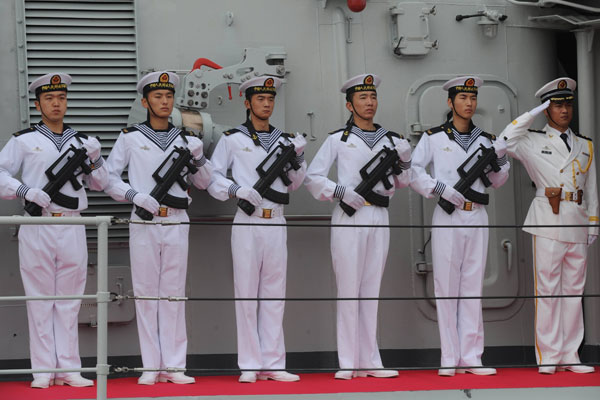On the eve of Secretary of State John Kerry’s testimony to Congress on securing American interests abroad, the release of the Chinese defense white paper is a reminder of the significant challenges confronting the U.S. in the Asia–Pacific region.
Sequestration may have Washington in knots, but there is no comparable situation in Beijing. The eighth Chinese defense white paper highlights that China’s military is not only substantial and modernizing, but that it will be a growing factor worldwide. This matters immensely to the U.S. because our interests and those of the Chinese—from Syria and Iran to the Korean Peninsula, East China Sea, and South China Sea—so often are at odds.
Retitled “The Diversified Employment of China’s Armed Forces,” this year’s white paper discusses the roles and organization of the Chinese armed forces, including not only the People’s Liberation Army (PLA), but also the People’s Armed Police Force (PAPF) and the militia.
For the first time, the Chinese are providing some insights into the PLA’s “order of battle,” i.e., how their forces are organized and deployed. The PLA Army, for example, is described as fielding some 18 combined-arms corps, as well as some independent divisions, with a strength of 850,000 men. These 18 corps are deployed to seven “military area commands,” what were formerly termed “military regions.”
The PLA Navy (PLAN) is formed into three fleets, with a total of 235,000 personnel. The PLA Air Force (PLAAF) has 398,000 personnel, with an “air command” (formerly “military region air force”) in each of the military area commands. The PLA Second Artillery Force controls both nuclear and conventional missile forces, and is “primarily responsible for deterring other countries from using nuclear weapons against China, and carrying out nuclear counterattacks and precision strikes with conventional missiles.”
The key tasks for the PLA include:
- Safeguarding national sovereignty, security, and territorial integrity, and supporting China’s peaceful development;
- Preparing to fight and win “local wars under informationized conditions,” and expanding and intensifying military preparedness;
- Supporting comprehensive security and effectively conducting military operations other than war (MOOTW), such as disaster relief and counterterrorist operations; and
- Deepening security cooperation with other nations and fulfilling international obligations.
Interestingly, all of this is to be achieved while “acting in accordance with laws, policies, and disciplines.” This last line reflects an ongoing effort by the PLA to establish a framework of national laws and military policies and regulations to govern military activities—essential as the PLA becomes a larger player on the international stage.It is also a reminder of the Chinese emphasis on legal warfare.
The latest white paper provides further insight into the role of the Chinese military in supporting national development. This entails not only helping to build key infrastructure projects and promoting scientific and technological development, but also supporting civilian authorities. While some of this relates to disaster relief, the Chinese armed forces, especially the PAPF, are also charged with maintaining social stability.
Strikingly, this edition of the Chinese white paper emphasizes maritime roles. In discussing the defense of national sovereignty, security, and territorial integrity, the maritime aspect is specifically referenced. Much of the discussion of border security, for example, is about coastal security. Safeguarding national development is equated with safeguarding maritime development and maritime interests.
The need to maintain combat readiness is exemplified by naval training. Indeed, it would seem likely that the PLAN will be pursuing more realistic blue-water training in the future. And China’s international cooperative efforts will include additional focus on preserving the security of the international sea lanes.
With each edition of the Chinese defense white paper, a little more is revealed about the Chinese military. How this compares with the American assessment, embodied in the annual Department of Defense report to Congress on Chinese military capabilities, remains to be seen. But what the Chinese report makes clear is that the Chinese will not be reducing their capabilities or shrinking their presence any time soon.
As every American Presidential Administration makes clear, in word, if not always in deed, the U.S. is a Pacific nation and a resident power in Asia. It cannot continue to play its indispensible role in Asia if current trend lines continue. The region, the global economy, and ultimately the United States itself will pay a price for its absence, in blood and treasure.
